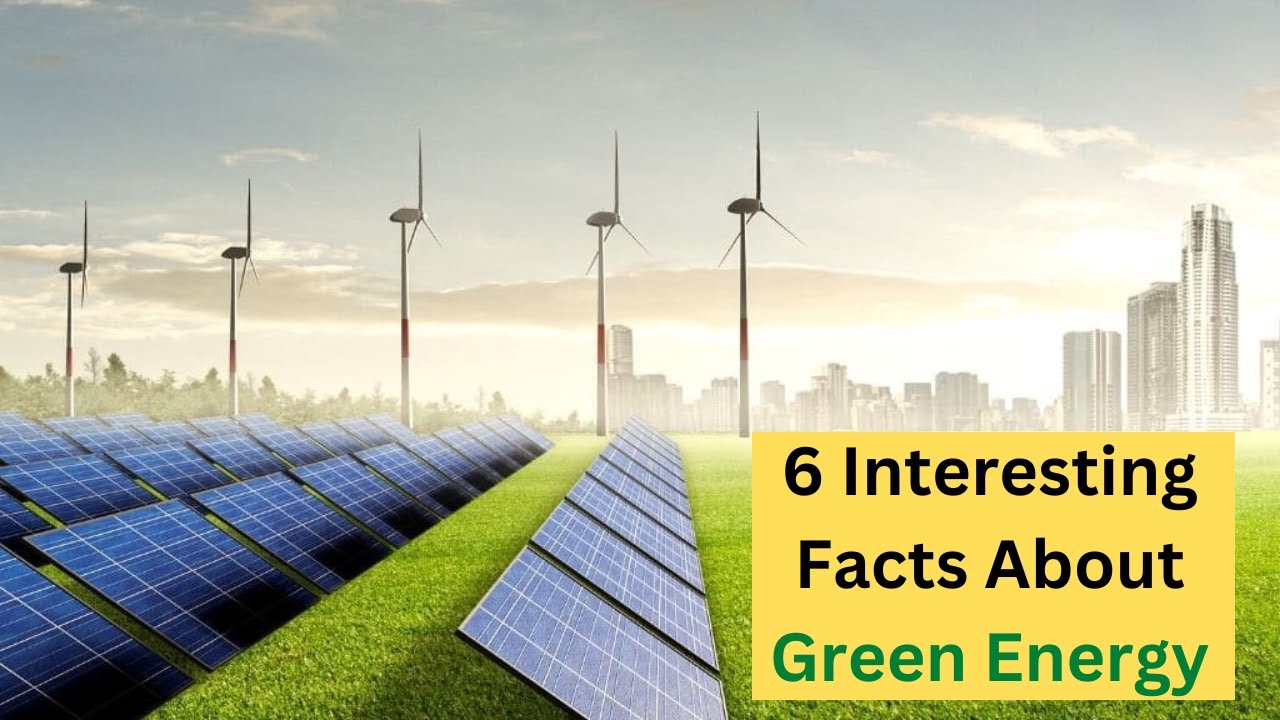
Introduction to Green Energy
As the world increasingly grapples with the effects of climate change, the shift towards green energy has become more crucial than ever. Green energy refers to power derived from renewable and sustainable sources that have a minimal impact on the environment. Understanding the facts surrounding green energy is essential for individuals and communities aiming for a sustainable future.
1. What is Green Energy?
Green energy encompasses various forms of energy that are considered environmentally friendly. These include:
- Solar Energy – Harnessing energy from the sun through solar panels.
- Wind Energy – Using wind turbines to convert wind into electricity.
- Hydropower – Generating electricity from flowing water.
- Geothermal Energy – Utilizing heat from beneath the Earth’s surface.
- Biomass – Converting organic materials into energy.
2. The Importance of Green Energy
The transition to green energy is vital for several reasons:
Environmental Benefits
Green energy sources produce little to no greenhouse gas emissions, making them far less harmful than fossil fuels. This shift is critical for combating global warming and preserving our planet.
Economic Advantages
Investing in green energy can create jobs in various sectors, including manufacturing, installation, and maintenance. Furthermore, renewable energy sources can lead to lower energy costs over time.
Energy Independence
By relying on local and renewable energy sources, countries can reduce their dependence on imported fossil fuels, enhancing their energy security.
3. Fact 1: Renewable Energy Sources Are Abundant
One of the most compelling facts about green energy is the abundance of renewable resources. The sun provides enough energy in one hour to power the world for an entire year. Similarly, wind and water are also plentiful resources that can be harnessed for energy.
4. Fact 2: Green Energy Is Cost-Effective
Over the past decade, the cost of generating electricity from renewable sources has plummeted. For example:
- The cost of solar energy has decreased by over 80% since 2010.
- Wind energy costs have also fallen significantly, making it one of the most affordable sources of electricity in many regions.
As technology continues to improve, the cost-effectiveness of green energy will likely enhance further, making it an attractive option for consumers and businesses alike.
5. Fact 3: Green Energy Creates Jobs
The renewable energy sector is a significant job creator. In 2020, the International Renewable Energy Agency (IRENA) reported that the sector employed over 11 million people worldwide. This number is expected to grow as more countries invest in renewable technologies.
Jobs in the green energy sector include:
- Solar panel installers
- Wind turbine technicians
- Energy efficiency auditors
- Research and development professionals
6. Fact 4: Green Energy Reduces Air Pollution
Switching to green energy sources significantly reduces air pollution. Traditional energy production methods, such as coal and natural gas, release harmful pollutants into the atmosphere. In contrast, renewable energy sources emit little to no harmful substances, leading to cleaner air and a healthier population.
7. Fact 5: Green Energy Supports Energy Storage Innovations
With the rise of renewable energy sources, the need for energy storage solutions has also increased. Innovations in battery technology, such as lithium-ion and flow batteries, are making it possible to store excess energy generated during peak production times for use when demand is higher.
This advancement ensures a reliable energy supply and enhances the overall efficiency of renewable energy systems.
8. Fact 6: Green Energy Improves Public Health
The shift towards green energy not only benefits the environment but also has a direct positive impact on public health. By reducing air and water pollution, communities can experience lower rates of respiratory diseases, cardiovascular problems, and other health issues linked to pollution.
9. Fact 7: Governments Are Supporting Green Energy
Many governments worldwide are implementing policies and incentives to promote the use of green energy. These include:
- Tax credits for renewable energy installations
- Subsidies for solar and wind energy projects
- Renewable portfolio standards that require utilities to obtain a certain percentage of energy from renewable sources
Such policies are crucial in accelerating the transition to a sustainable energy future.
10. Fact 8: Energy Efficiency Is Key
While green energy is essential, energy efficiency plays a vital role in reducing overall energy consumption. Simple measures such as using energy-efficient appliances, improving home insulation, and adopting smart home technologies can significantly decrease energy demand.
By combining green energy with energy efficiency practices, individuals and communities can achieve a more sustainable lifestyle.
11. Fact 9: The Future of Green Energy Is Bright
The future of green energy looks promising, with continued advancements in technology and growing public awareness of environmental issues. According to the International Energy Agency (IEA), renewable energy sources are projected to account for nearly 80% of global electricity generation by 2050.
This shift not only indicates a commitment to sustainability but also reflects the growing recognition of the need for a clean energy transition.
12. Fact 10: Every Individual Can Contribute
While large-scale changes are essential, every individual has the power to contribute to a sustainable future. Here are some ways to get involved:
- Reduce energy consumption by turning off lights and unplugging devices when not in use.
- Choose renewable energy options from your utility provider, if available.
- Support local and sustainable businesses that prioritize green practices.
- Advocate for renewable energy policies in your community and support organizations working towards a sustainable future.
Conclusion
Understanding these 10 essential green energy facts is crucial for anyone looking to contribute to a sustainable future. The transition to renewable energy sources is not just an environmental necessity but also an economic opportunity. By embracing green energy, we can create a cleaner, healthier planet for generations to come. It’s time to take action, spread awareness, and make informed choices that will lead us towards a more sustainable future.

